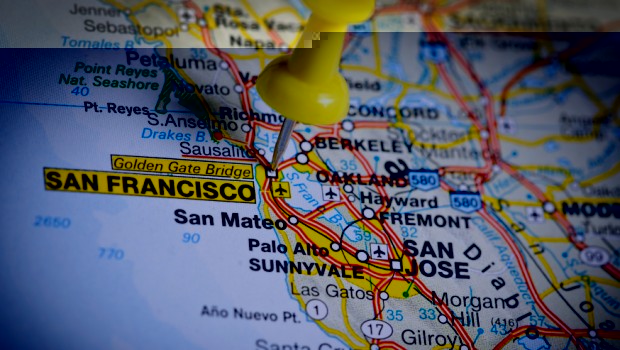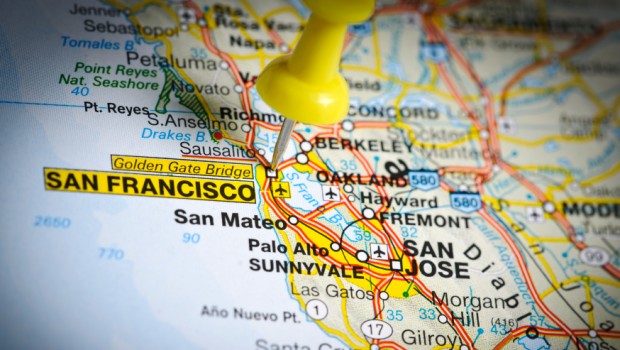
The Internet wants to know: Who are you? Think of it as Pete Townshend from The Who, busting his signature windmill moves on his Les Paul guitar while Roger Daltrey repeats, “Whooooo are you? Who, who, who, who? I really wanna know.” People are always searching on websites like Google, Yelp, Foursquare and more looking for the best place to go. So tell them who you are. We know small businesses are short on time, especially when it comes to SEO, so here’s a simple guide to get on the map, (pun intended), of local SEO.
Why Do Local SEO?
Let’s say you have a deli with top notch sandwiches in San Francisco’s SOMA district and you wonder why your lunch crowd isn’t as happening as you’d like. You go to Google or Yelp and type in “best sandwich in SOMA, San Francisco.” You’re 5 pages deep in the rankings and your business is nowhere to be found. To add insult to injury, your business neighbor is on the 1st page and flaunts a line out the door everyday at lunch. How’d he do it, and how do you get in on the secret?! We’re glad you asked and are here to help.
What Info Do You Need to Get Started?
In the pre-Internet days, your business efforts consisted of calling up the YellowPages and making sure your address, phone number, and business hours were correct. To be honest, the basics of local SEO are not much different than the old days of the YellowPages. To keep it simple, you want to make sure all of your vital information is listed and correct on all the different websites like Google, Yelp, and Foursquare.
Pro Tips:
- Make a list with the following items down one side and the sites along the top. As you fill them out on each site, check them off your list so you can keep track.
- Keep your information consistent!
Business name: It deserves repeating; keep it consistent. Having “BIZ XYZ Inc,” “Biz XYZ,” and “XYZ,” on three different sites can really confuse potential customers. Having multiple and duplicate listing also looks bad to search engines, which can negatively affect your local SEO efforts. Pick one version and stick with it across the board.
Physical address: If you have a brick and mortar location, use that address. If you work out of your home, you might have some issues to work out. Some sites allow you to put down a PO Box, while others force you to put down your home address, but allow it to be hidden from public view.
Company logo: Create some good brand awareness and recognition by using your logo as one of your profile images. That way, when a person makes it to your location, they’ll put two and two together and will head on in for that mouth-watering, hunger-smashing sandwich.
Business categories: This helps the sites know what kind of business you are and what categories to put you in. If you offer several services, then list them all! Some sites limit you to a top 5 list, so pick your best ones.
Facebook account: People like to follow businesses they love on Facebook, so include a link to your business Facebook Page. Don’t forget Facebook also offers “Check Ins,” so you’re knocking two things out with one link. If you have a big following on Facebook offer check in specials and offers.
Other important things to remember:
- Email address
- Website address
- Business phone
- Store hours
- Twitter handle
- Google+ profile
- Services offered
- Service area
So you’ve got your checklist ready and are itching to start claiming your business on all the sites. But don’t get ahead of yourself here, you have to know what to expect when you try to claim your business and get verified.
Common Verification Practices
Most sites offer 3 ways to verify that you are, in fact, the business owner. The sites use several different external sources to gather your business address and phone number. In the case that there’s incorrect information on your profile, you need to first verify your business BEFORE you can make any changes to the name, address or phone number.
Automated phone calls: Once you start the process of claiming or verifying your business page, you will be prompted to enter a verification code. Using information already provided, the site’s automated system will call the phone number on file, which is usually the business landline, and provide you with a top secret PIN. You then enter the PIN into the box online and press enter. It’s as easy as that! Wham, bam and done. We always suggest opting for the phone call because it’s the fastest way to get your page verified.
Postcards with verification PIN: Can’t remember where your landline phone is or you’ve changed your number? Unfortunately sites don’t let you change the business phone UNTIL your business page is verified. Ugh. Not to worry, because you do have the option to do postcard verification. The steps are the same as the phone verification with the exception of getting a phone call. Just check the “send me a postcard” box and wait the 3-14 days until you receive the postcard at your business address on file. Then log back onto the site, postcard in hand and then enter the PIN, completing your verification.
Email: The email verification is least common method of verification because sites don’t have many sources to verify the authenticity of the email address. Some of the less used directories use this method and it is just like verifying for any other site that sends a confirmation email. We would be surprised if you came across this in your local SEO travels.
You know what information to include and what to expect, now you need to know where to get listed. With out further ado, here ya go!
Where to Get Listed?
Since you’re short on time, start with the biggest fish: Google. After that, work your way down the list. Depending on your business category, some sites might be better than others. For example, if you want to be the hottest lunch spot in the neighborhood, you better get on Yelp!
Google+/Google Local (formerly Google Places): Remember the summer of 2011 when Google rolled out its very own social network called Google Plus, or sometimes G+? It was touted as the next Facebook, and quickly gained 500 million users in a year and half, but lost some steam and currently only about half of those users are active on the site on a monthly basis. At first, Google Plus didn’t offer pages for businesses, but that has changed. If you want your business to be registered in Google Local you need to be on Google+. Yes, that’s forcing your hand a bit, but it’s a necessary evil on the local SEO front. Once you register for your personal, non-business, Google Plus page you will need to “claim your business.” In order to be verified you can choose between an automated phone call and having a postcard sent to your business address. As we mentioned above, we recommend opting for the automated phone call to get it over and done with.
Yelp for Business Owners: If you have a restaurant, or offer a service, you NEED to be on Yelp. Grab a few Yelp! stickers, put them in your window, and make sure your customers know you would really appreciate a rating. WARNING: Whatever you do, be sure NOT offer any freebies like gift cards, chips, or even a soda! Trading goods for a positive review violates Yelp’s, Google’s and many other site’s terms of service agreements.
Bing Local: Bing might not drive as much traffic as Google, but you still want to have a presence. Other sites use the information on Bing Local to complete their listings, so don’t ignore Bing!
Foursquare: Trust us, you want people to be competing to become the mayor of your business! Some of our favorite local pizza places offer a free beer to the mayor, so our office keeps going back for more slices. Customers can check in and share with all of their social networks, which then expands the reach of your business. Foursquarers can also leave fun useful tips like, “Be sure to get the special sauce cause it is #bombdotcom!”
Facebook: First, get a Facebook page for your business. Second, add your address or location to your Page. Once your page is up and running, start inviting friends, family and customers to “LIKE” your page and you will be on your way to getting listed.
You aren’t done yet! Don’t forget these:
- Yahoo Local
- Superpages.com
- Yellow Pages
The Coolest Tools to Use
We cut through all the bull dung and found two tools that really do help you out on the local SEO front (and for FREE to boot!)
getlisted: Recently purchased by SEO powerhouse, SEOmoz, getlisted is the place to find the best directories to get listed on. Punch in your business name and zip code and you will be given a listing score. The score is based on whether your business is present in the local directories or not. If your score is low, don’t get discouraged, because getlisted gives you a quick link that takes you right to the place to claim your listing, boosting your score. You want to strive for a 90% or higher listing score.
Boostsuite: They are coined the “kick-ass web marketing assistant,” and that is spot-on. Boostsuite helps you get your website in tip-top SEO shape, which is known as on-page SEO. Get a handful of suggestions for free. You don’t need super website skills because you can send the suggestions and changes right to your Webmaster.
There you have it! Take a little time and crank out a few of these sites and you will have a leg up on your competitors. Do you have a great local SEO presence? Or maybe you have a lot of 5 star reviews on Yelp. We would love to hear about it in the comments!
Chipper Nicodemus
